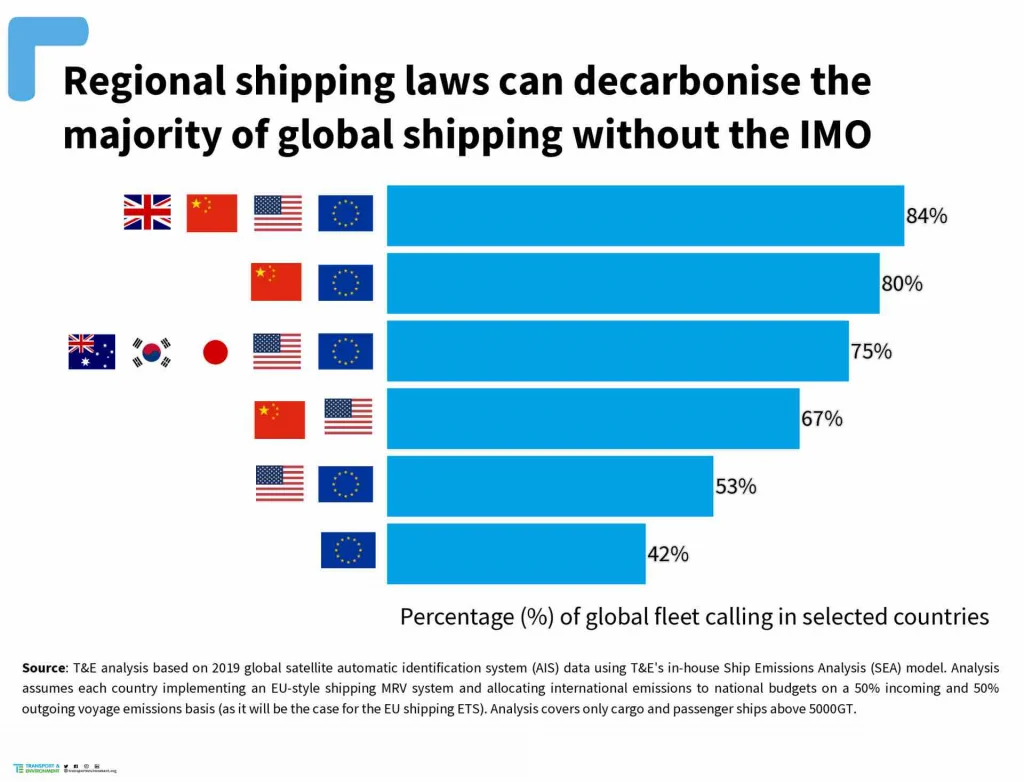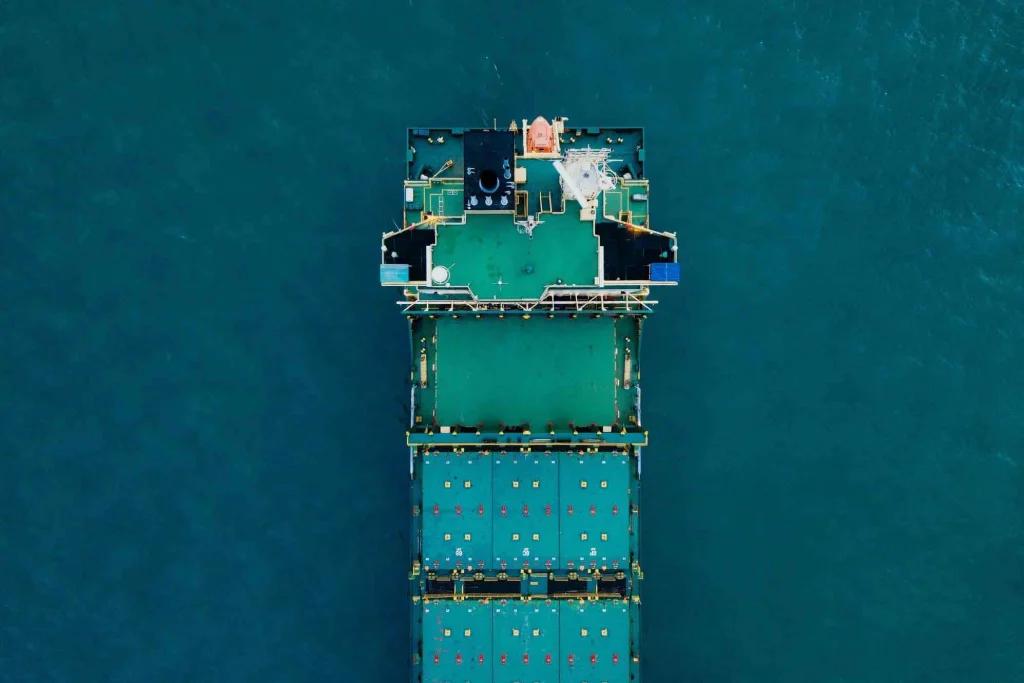28 November 2024
EU, China and US could decarbonize 84% of global shipping emissions without IMO

A new study from Brussels-based NGO T&E suggests Europe, China and the US could decarbonize 84% of all global shipping emissions without IMO.
The next meeting of the Marine Environment Protection Committee (MEPC) is just a few weeks away. Hence, pressure is growing once again on the International Maritime Organization (IMO) to deliver stricter green targets.
Concept
With the vast majority of ships calling at European, Chinese and US ports, regulation of shipping emissions in these economies would be enough to decarbonize shipping globally.
Particularly, 84% of shipping traffic goes through Europe, China and the US, a new Transport & Environment (T&E) study shows. If these economies were to regulate ships calling at their ports, they could decarbonize the lion’s share of the industry and in doing so bypass the “ineffective” International Maritime Organization (IMO), says T&E.
“Efforts to decarbonise shipping at the IMO have so far been miserable. The need for consensus at the global level has brought us nowhere. But there is a much easier way to do it. With the vast majority of ships passing through Europe, China and the US, these leading economies can unilaterally regulate emissions without relying on the ineffective IMO.”
Jacob Armstrong, Sustainable Shipping Officer at T&E
While China, Europe and the US only account for 40% of shipping emissions, the vast majority of ships call at one of their ports. T&E calls on the three economies to agree on measures to reduce their maritime emissions. This including carbon markets, pollution taxes, energy efficiency targets, and zero-emission fuel standards to create a de facto global regulatory regime.

The results demonstrate for the first time the huge impact that national and regional policy action can have on global decarbonisation. Thus, show the path to a transition that respects differentiated capacities between the Global North and Global South. In light of this analysis, T&E urges countries with the administrative capacity to decarbonise shipping. This including countries in the Global North and China. Hence, put in place measures to reduce their maritime emissions.
Recommendations
- Developed nations must urgently put in place per-voyage monitoring regulations for shipping emissions;
- Countries should then implement decarbonization legislation on their share of shipping emissions (at least 50% of incoming and outgoing voyages);
- The UNFCCC must clarify its guidance to state unambiguously that international shipping is part of the Paris Agreement, instruct nations to report shipping emissions to the UNFCCC on a per-voyage basis and organize regular stocktakes on shipping decarbonization;
- Once shipping decarbonization reaches critical mass, the IMO should codify a global phase-out date for shipping pollution.
Source: Transport & Environment
See Also
How can energy-saving technologies, also referred to as energy-saving devices, help you comply with CII? If you want hard data and real-world examples from vessel operators keep on reading the following article.
70% of webinar participants revealed they were planning upgrades, while 0% needed no upgrades. What’s behind these stark figures?

How energy-saving technologies can help CII rating
How can energy-saving technologies, also referred to as energy-saving devices, help you comply with CII? If you want hard data and real-world examples from vessel operators, a recent webinar is a must.


